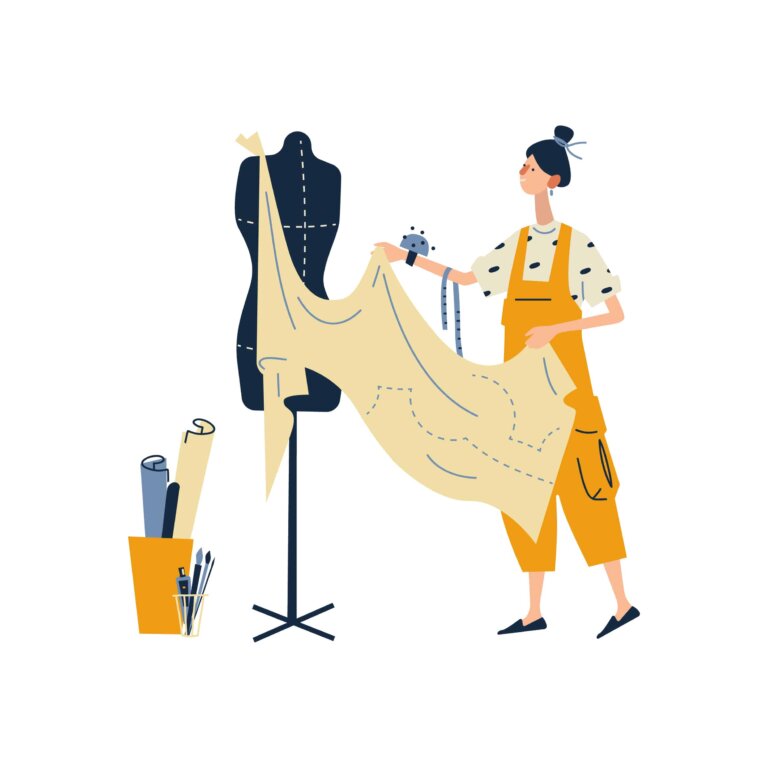A clothing design patent isn’t a specific category. The United States Patent and Trademark Office requires the same criteria for all inventions seeking a patent, so there are no steps that are unique to clothing design. Working with an attorney is the best way to choose the right protection and complete the steps necessary to obtain it.
Do You Need a Clothing Design Patent?
A patent’s goal is to guarantee exclusive use of a design or function. That’s why patents are broken up into two categories: utility and design. Utility protects the way something works; design covers how it looks. Some products will require both types of patents.
The big question to ask yourself here is: do you need to patent your clothing line? Would exclusive use significantly benefit you, and do you meet the qualifications for it? Any invention that you seek a patent for, regardless of type, will have to meet four basic qualifications.
Utility
Utility is the most easily met requirement. You just need to show your idea is useful but that is a heavily subjective term. If it has a purpose, even if that purpose is just to look nice, it’s likely to meet the utility standard.
Example: The recent approval of Nike’s Air Jordan 1 patent highlights how lax the term useful can be, as the unique design is primarily an aesthetic feature.
Non-Obviousness
The design has to be something that only you can think of. If someone in your field could come up with the same idea using available information, it won’t meet the non-obvious standard.
Example: While pants certainly existed when Levi’s patented their jeans in 1873, it was their metal rivet reinforcement process that made their product non-obvious.
Subject Matter Eligibility
Laws of nature, abstract ideas, and physical phenomena are all non-patentable by themselves. The product may leverage those categories but cannot be entirely defined by them.
Example: The Hypercolor trend seen in the 1990s featured a patented process that caused dye to react to body heat. This created the color-changing clothing that many of us remember as a fad. The creator, Generra, was successful in their bid for a patent because of the unique dye process they created.
The Steps of the Patent Process
Your work has only just begun once you’ve established you’ve got a patentable idea. The patent process itself is long and requires quite a bit of due diligence. All that starts with your search.
Search opinion
The patent search process is extensive. If there are any existing similar designs or prior publicly available information, the patent will be denied. You’ll need to tackle two types of searches: patents and prior art. Patent searches focus specifically on existing patents and how their claims could impact yours. A prior art search is far broader. It seeks out non-patent documents that may reveal information on your invention that makes it ineligible. A search opinion is a comprehensive look at potential conflicts and a legal review of invention eligibility. This will save you a lot of time and frustration in the patent process.
Provisional application
A provisional application is designed to hold your date. In a patent dispute, typically, the person who prevails is the one who filed earliest. A provisional application locks in a specific date and gives you time to gather the information needed. Once your provisional application is accepted, you have one year to file your nonprovisional application. The provisional application is often advisable when you’re still working on prototypes and developing your idea. It’s also a good opportunity to test the market. This isn’t a mandatory step, however, so you can simply file a non-provisional application.
Nonprovisional application
A nonprovisional application starts the official process in which a patent will be granted. This extensive document should include diagrams, images, detailed descriptions, and more. You’ll also have to pay the filing, search, and examination fees based on your entity size. That size is established by yet another form, as fees depend on whether you’re considered a micro, small or standard entity. As you go through the application process, you’ll learn that every step spurs the need for another form. Applications can be hundreds of pages long, and errors can lead to denial.
It’s also worth noting that non-provisional and provisional applications only apply to utility patents, not design patents.
Prosecution
Patent prosecution sounds intimidating, but it’s really just the process of working with the United States Patent and Trademark Office to facilitate approval. It covers all the stages before this one, as well as the physical act of submitting the application. There may be back and forth between the patent office due to follow-up questions. In some cases, decisions will require an appeal. Legal guidance will be critical to ensure a smooth transition to the next step.
Patent granted
At this point, you will have exclusive use of your clothing design for a period of 15 to 20 years, depending on the patent type. Design patents are good for 15 years; utility patents go for 20. However, your work isn’t done when your patent is received. You must maintain it by monitoring it for use, responding to potential infringements, and paying maintenance fees as appropriate.
There is a lot to getting a clothing design patent to consider. Most people find it’s easier to navigate this complex process with an experienced attorney by their side. The world of patents and intellectual property protection is tricky. The right IP attorney makes it easier so you can focus on creating.
Bold Patents can help you obtain your clothing design patent and protect your intellectual property for years to come. To learn more, contact us online or call 800-849-1913.

